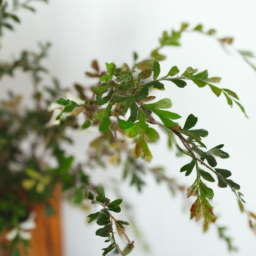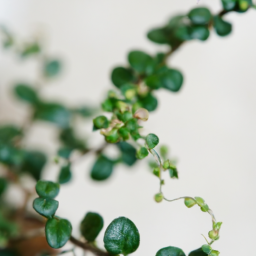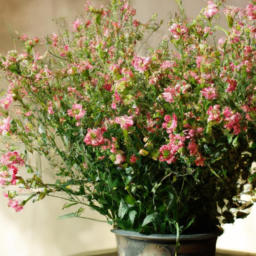
Are you looking to bring a touch of nature into your home? Indoor plants and flowers are a great way to add beauty and life to any space, while also providing numerous health benefits. Whether you have a green thumb or are a self-proclaimed plant killer, there are plenty of options to choose from that are low-maintenance and easy to care for. In this blog post, we will explore the world of indoor plants and flowers, discussing their benefits, different types, and how to care for them to ensure they thrive in your home. So, grab a cup of tea and let’s dive into the wonderful world of indoor plants and flowers!
Benefits of Indoor Plants and Flowers
Improved Air Quality
Indoor plants and flowers are not just aesthetically pleasing; they also play a crucial role in improving the air quality inside your home. Plants absorb carbon dioxide and release oxygen through the process of photosynthesis. This helps to increase the oxygen levels in your home and create a healthier environment for you to live in.
In addition to producing oxygen, indoor plants also help to remove toxins and pollutants from the air. Studies have shown that certain plants, such as spider plants and peace lilies, can help to filter out harmful chemicals like formaldehyde and benzene. By having these plants in your home, you can breathe easier and reduce your exposure to indoor air pollutants.
Furthermore, indoor plants can help to increase humidity levels in your home. This is especially beneficial during the winter months when indoor heating can cause the air to become dry. By releasing water vapor through a process called transpiration, plants can help to maintain optimal humidity levels and prevent issues like dry skin and respiratory problems.
Overall, having indoor plants and flowers in your home can significantly improve the air quality and create a healthier living environment for you and your family.
Stress Reduction
In today’s fast-paced world, stress has become a common problem for many people. Fortunately, indoor plants and flowers can help to reduce stress and promote a sense of calm and well-being. Studies have shown that simply being around plants can have a calming effect on the mind and body, helping to lower blood pressure and reduce feelings of anxiety and tension.
The act of caring for indoor plants can also be therapeutic in itself. Watering, pruning, and tending to your plants can provide a sense of purpose and accomplishment, helping to distract your mind from daily stressors and worries. In addition, the presence of greenery indoors can create a sense of connection to nature, which has been shown to have a positive impact on mental health and well-being.
Furthermore, certain plants, such as lavender and jasmine, have been found to have natural stress-relieving properties. The scent of these plants can help to promote relaxation and improve sleep quality, making them ideal additions to your indoor garden.
By incorporating indoor plants and flowers into your home, you can create a peaceful and soothing environment that promotes relaxation and reduces stress.
Enhanced Productivity
Indoor plants and flowers can also have a positive impact on your productivity and overall well-being. Studies have shown that having plants in the workplace can help to improve concentration, memory, and cognitive function. The presence of greenery indoors can help to reduce mental fatigue and increase focus, making it easier to stay on task and complete work efficiently.
In addition, indoor plants can help to create a more inviting and aesthetically pleasing workspace. Research has found that employees are more satisfied and productive in environments that incorporate natural elements, such as plants and flowers. By adding greenery to your office or home office, you can create a more inspiring and motivating space that encourages creativity and innovation.
Furthermore, indoor plants have been shown to reduce symptoms of sick building syndrome, such as headaches, fatigue, and respiratory issues. By improving air quality and creating a healthier indoor environment, plants can help to prevent common workplace ailments and promote overall well-being.
Overall, incorporating indoor plants and flowers into your workspace can help to enhance productivity, creativity, and overall job satisfaction.

Popular Indoor Plants and Flowers for Beginners
Welcome to the wonderful world of indoor plants and flowers! Whether you are a seasoned plant enthusiast or just starting out, there are plenty of options to choose from when it comes to adding greenery to your indoor space. In this guide, we will explore some of the most popular indoor plants and flowers that are perfect for beginners.
Spider Plant
The Spider Plant, also known as Chlorophytum comosum, is a classic choice for beginners due to its low maintenance requirements and air purifying qualities. This plant is characterized by its long, arching leaves that resemble spider legs, hence its name. Spider Plants are known for their ability to thrive in a variety of lighting conditions, making them versatile options for indoor spaces.
To care for your Spider Plant, place it in indirect sunlight and water it when the top inch of soil feels dry to the touch. Spider Plants are known to produce small white flowers and baby plantlets, which can be propagated to grow new plants. With proper care, your Spider Plant will thrive and add a touch of green to your indoor space.
In addition to its aesthetic appeal, the Spider Plant is also known for its air purifying qualities. This plant is effective at removing toxins such as formaldehyde and xylene from the air, making it a great choice for improving indoor air quality.
Pothos
Pothos, also known as Epipremnum aureum, is another popular indoor plant for beginners due to its low maintenance requirements and ability to thrive in low light conditions. This plant is characterized by its heart-shaped leaves that come in a variety of colors, including green, yellow, and variegated patterns.
To care for your Pothos plant, place it in indirect sunlight and water it when the top inch of soil feels dry. Pothos plants are known for their trailing growth habit, making them ideal for hanging baskets or placed on high shelves. Regular pruning can help promote bushier growth and prevent leggy stems.
In addition to its aesthetic appeal, Pothos plants are also known for their air purifying qualities. These plants are effective at removing toxins such as formaldehyde, benzene, and carbon monoxide from the air, making them a great choice for improving indoor air quality.
Sansevieria
Sansevieria, also known as Snake Plant or Mother-in-Law’s Tongue, is a popular indoor plant for beginners due to its low maintenance requirements and ability to thrive in low light conditions. This plant is characterized by its tall, sword-shaped leaves that come in a variety of colors and patterns, including green, yellow, and variegated.
To care for your Sansevieria plant, place it in indirect sunlight and water it sparingly, allowing the soil to dry out between waterings. Sansevieria plants are known for their air purifying qualities, as they are effective at removing toxins such as formaldehyde, benzene, and trichloroethylene from the air.
In addition to its air purifying qualities, Sansevieria plants are also known for their ability to thrive in a variety of indoor conditions, making them versatile options for beginners. With proper care, your Sansevieria plant will thrive and add a touch of green to your indoor space.

How to Care for Indoor Plants and Flowers
Choosing the Right Plants
When it comes to caring for indoor plants and flowers, the first step is choosing the right plants for your space. Consider the amount of light your indoor space receives and choose plants that thrive in those conditions. Some plants, like succulents and cacti, prefer bright, direct sunlight, while others, like spider plants and peace lilies, can thrive in low light conditions.
Once you have chosen the right plants for your space, make sure to consider the size of the plant and how much space it will need to grow. Some plants, like fiddle leaf figs and monstera plants, can grow quite large and will need plenty of room to spread out. Make sure to choose plants that will fit comfortably in your space and won’t outgrow their containers too quickly.
When it comes to choosing the right containers for your plants, make sure to consider drainage. Plants need proper drainage to prevent root rot and other issues. Choose containers with drainage holes in the bottom to allow excess water to escape. You can also add a layer of rocks or gravel to the bottom of the container to help with drainage.
Watering and Feeding
One of the most important aspects of caring for indoor plants and flowers is proper watering. Different plants have different watering needs, so make sure to research the specific needs of each plant you have. Overwatering can lead to root rot, while underwatering can cause plants to wilt and die.
To water your plants properly, make sure to water thoroughly, allowing the water to soak into the soil and reach the roots. Make sure to water the plants when the top inch of soil feels dry to the touch. You can also use a moisture meter to help determine when your plants need water.
In addition to proper watering, indoor plants and flowers also need to be fed regularly. You can use a liquid fertilizer diluted to half strength to feed your plants every 2-4 weeks during the growing season. Make sure to follow the instructions on the fertilizer package and avoid overfeeding, as this can cause damage to the plants.
Light and Temperature
Another important aspect of caring for indoor plants and flowers is providing the right amount of light and maintaining the proper temperature. Most indoor plants prefer bright, indirect sunlight, so make sure to place your plants near a window where they can receive plenty of light. If your plants start to look leggy or pale, they may not be getting enough light.
In terms of temperature, most indoor plants prefer temperatures between 65-75 degrees Fahrenheit during the day and slightly cooler temperatures at night. Avoid placing your plants near drafty windows or heating vents, as this can cause temperature fluctuations that can stress the plants.
By following these tips for caring for indoor plants and flowers, you can help your plants thrive and bring beauty and life to your indoor space. Remember to research the specific needs of each plant you have and adjust your care routine accordingly. With the right care and attention, your indoor plants and flowers will flourish and bring joy for years to come.
In a Nutshell
Indoor plants and flowers not only add beauty to our homes but also offer a range of benefits for our well-being. From improving air quality to reducing stress levels, these green companions bring a touch of nature into our indoor spaces. Whether you’re a seasoned plant parent or just starting out, there are plenty of options to choose from to suit your lifestyle and space.
Some popular indoor plants include easy-to-care-for varieties like pothos and snake plants, which require minimal maintenance and can thrive in low-light conditions. For those looking to add a pop of color, flowering plants like orchids and peace lilies can brighten up any room. With the right care and attention, indoor plants and flowers can bring joy and a sense of tranquility to your living space, making them a worthwhile investment for both your home decor and your overall well-being.
Frequently Asked Questions (FAQ):
Q1: What are some easy-to-care-for indoor plants?
A1: Some easy-to-care-for indoor plants include pothos, spider plants, snake plants, and peace lilies. These plants require minimal maintenance and can thrive in various indoor environments.
Q2: How often should I water my indoor plants?
A2: The frequency of watering indoor plants depends on factors such as the type of plant, the size of the pot, and the environment. In general, it’s best to water your plants when the top inch of soil feels dry to the touch.
Q3: What are some benefits of having indoor plants?
A3: Indoor plants not only add beauty to your home or office space but also have numerous health benefits. They can improve air quality, reduce stress levels, boost mood, and increase productivity.
Q4: How can I prevent pests from infesting my indoor plants?
A4: To prevent pests from infesting your indoor plants, regularly inspect them for any signs of pests or diseases. You can also use natural remedies like neem oil or insecticidal soap to treat and prevent pest infestations.
Q5: Can I grow flowers indoors?
A5: Yes, you can grow flowers indoors! Some popular flowering plants that thrive indoors include orchids, African violets, peace lilies, and begonias. Make sure to provide adequate sunlight and proper care to help your indoor flowers bloom beautifully.
Dr. Olivia Green is a botanist with over two decades of experience in indoor plant cultivation. She holds a Ph.D. in Plant Biology and has dedicated her career to researching plant behavior in controlled environments. Dr. Green is passionate about helping plant enthusiasts master the art of indoor gardening through her extensive knowledge and practical insights.


